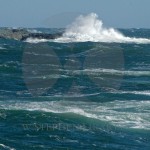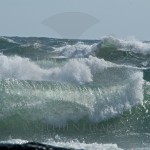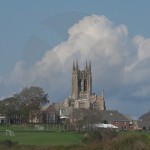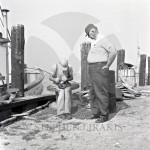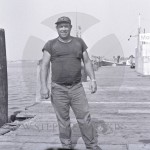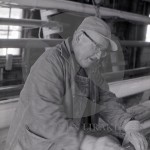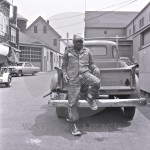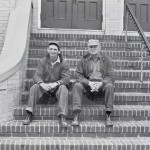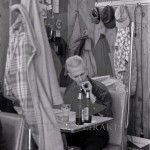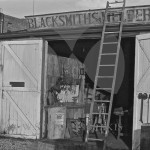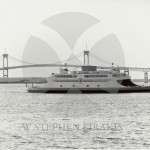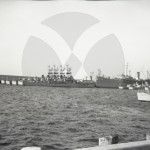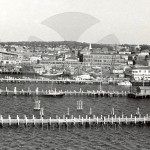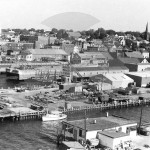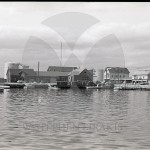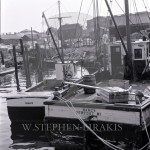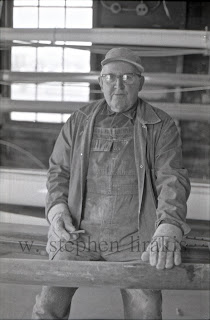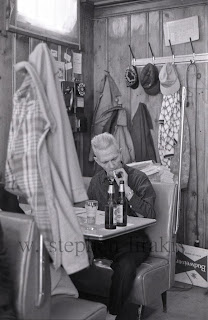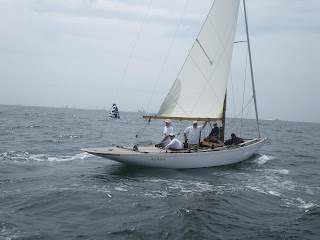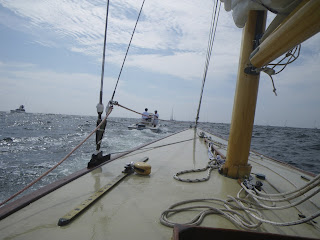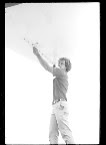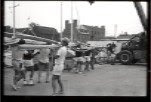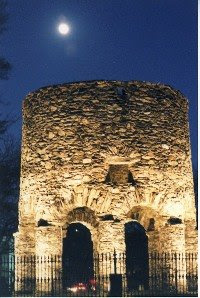This morning you could feel the change in the weather; the changeover to fall. A wonderful clear day with great billowing clouds and plenty of wind. To view more images go HERE.
Category: newport ri
JOHN HOPF
John Hopf was a man of his time. He was much more than just the photographs of the America’s Cup. It is important to put him in the context of time. He was working with the available materials and technology. There was no Go-pro, or digital cameras. He was a neighbor and I could walk by and see the retractable roof where he had his telescope that he had built.
John T. HopfNEWPORT – John Timothy Hopf,
91, of Newport, RI, died Tuesday, September 27, 2011 at home surrounded by his family. He was the husband of Audrey R. (Linehan) Hopf. Born in Newport, RI, on September 26, 1920 he was the son of the late John M. and Margaret (Murphy) Hopf.John was the most visible name in Newport. It’s on millions of reprints of his sixty postcards, five Newport photo books and numerous aerial photo-posters. He was responsible for the Newport Then and Now. A Newport native, John has served as president of the Newport Taxpayers Association and is its oldest board member. He received the 1965 Stellafane Award for a telescope that he built. But his most prized award is the Gold Medal Award from the Preservation Society of Newport County in 1977, for his publishing of the 1st mansions of Newport book. John has also received the award for the best postcard from the Postcard Association of America, for his aerial of the Cliff Walk and the Breakers. Many of these large picture’s are still on display in local restaurants, like Christies, the Viking Hotel, Coddington Brewing Co. and the Atlantic Beach Club. John was the first to take an aerial of the Island at 10,000 feet, and other unsurpassed aerial photographs including Providence. He was a commercial and aerial photographer. He and his family ran a business publishing post cards and guidebooks of Rhode Island. He was an avid Studebaker collector, he filmed many historic movies of Newport dating back to the 30’s, and was an avid astronomer belonging to the Skyscraper Association. He is also an accomplished pianist. He produced piano arrangements for silent movies for many years at the former Casino Theater and at the Newport Art Museum. He was also a member of St. Mary’s Church.Besides his wife of 58 years, he is survived by his children, Adele E. Hopf of Newport, RI, Linda M. Davignon and her husband Patrick of Cranston, RI, Catherine Drescher of Warwick, RI, John J. Hopf of Middletown, RI and Susan M. Hopf of Newport, RI, his grandchildren, Melissa Payne and her husband Christopher of York, PA, his great-grandchildren Ryan and Matthew Payne, and his sister Estelle O’Connell of Newport, RI and nieces and nephews. He was the grandfather of the late Ryan P. Davignon.Calling hours are omitted. His funeral will be held on Thursday, September 29, 2011, at 9 a.m. from the Hambly Funeral Home, 30 Red Cross Avenue, Newport, with a Mass of Christian burial at 10 a.m. in St. Mary’s Church, Spring Street, Newport. Burial will be in St. Columba Cemetery, Brown’s Lane, Middletown.Donations in his memory, may be made to the Robert Potter League for Animals, P.O. Box 412, Newport, RI 02840, Visiting Nurse Services of Newport and Bristol Counties, 1184 East Main Road, Portsmouth, RI 02871 or to the Covenant House, 460 West 41st, New York, NY, 10036-6801.
WORKING THE WATERFRONT
The story of the Newport waterfront was one tied to a long history of the sea. Newport is an island and before the bridge it really was a different place. The ferry only ran during the day until summer and then only until 11 pm. Shopping centers were only something one read about in the news; somewhere else.
John and Kelly, sitting on the steps lived in a rooming house on Spring street: I doubt they had health insurance. Having a job was a badge of honor, a duty. All of the men pictured had skills that today people are paying to learn at places like IYRS. They were not particularly literate, but had something to offer.
Aluminum masts were still unusual. Rigging was wire rope. Wood shavings and sawdust were always everywhere, along with galvanized nails and silicon bronze flathead slotted wood screws.
Boats had to be tended to when launched until the planking swelled enough to keep the water out. I delivered a boat south one year that had spent the summer tied to the dock. It was a miracle we did not sink she leaked so badly during the trip . I will add that it blew 50 the entire time.
The Navy was a big presence in Newport, but so was fishing. This was a working waterfront.
WHARF RATS ON THE NEWPORT WATERFRONT
All stories must have context. These images are the Newport waterfront I knew as a teenager. I had to limit the images, there are so many that evoke memories of how things were, a simpler time.
Joe Cooper is responsible for this post, when he referred to me as the original wharf rat. The consequences of an offhand remark. I looked up the definition of wharf rat. Unfortunately what I found was not as flattering as I had hoped.
I will post some images of the people who were the real waterfront: gave it personality. For now this is the place they lived and worked.
Long strand manila rope was sill an important commodity in the chandleries, three strand dacron was really special, Samson braid and Intrepid braid did not yet exist.
I learned to make my first wire to rope tail splice, and macrame and baggywrinkle were commonplace. Newport was still very much a Navy town. The MP’s were on every corner during the weekends to deal with the sailors on leave.
The important fact is that it was a working waterfront, the fabric of which had evolved from necessity. Life was definitely a little slower.
HISTORICAL CONTEXT, the way we were
It is important to keep a perspective. This is the Newport during the 1960’s.Newport was still as sleepy navy town. We do not often take the time to reflect on how things were. If you are like me; you are racing to finish what you started during the day. Never mind the simple interruptions.
The Newport Bridge did not open until 1969. The photograph of the ferry with the bridge in the background I took from the transom of “Carina” on the way out to the start of the transatlantic race to Ireland.
These are the men who worked on the 12 meters and every other ship that was hauled at Newport Shipyard.
Newport still had a working waterfront, filled with fishing boats. As you look at the photos many more small insights will appear.
QUEEN’S CUP
 Today I sailed the Queen’s Cup, a race with no time limit usually sailed the second day of the New York Yacht Club’s annual cruise.
Today I sailed the Queen’s Cup, a race with no time limit usually sailed the second day of the New York Yacht Club’s annual cruise.
bannister’s wharf



 In 1977 bannister’s wharf was the dock for the Courageous/Independence syndicate. A lift was installed and we alternated boats in the lift.
In 1977 bannister’s wharf was the dock for the Courageous/Independence syndicate. A lift was installed and we alternated boats in the lift.

